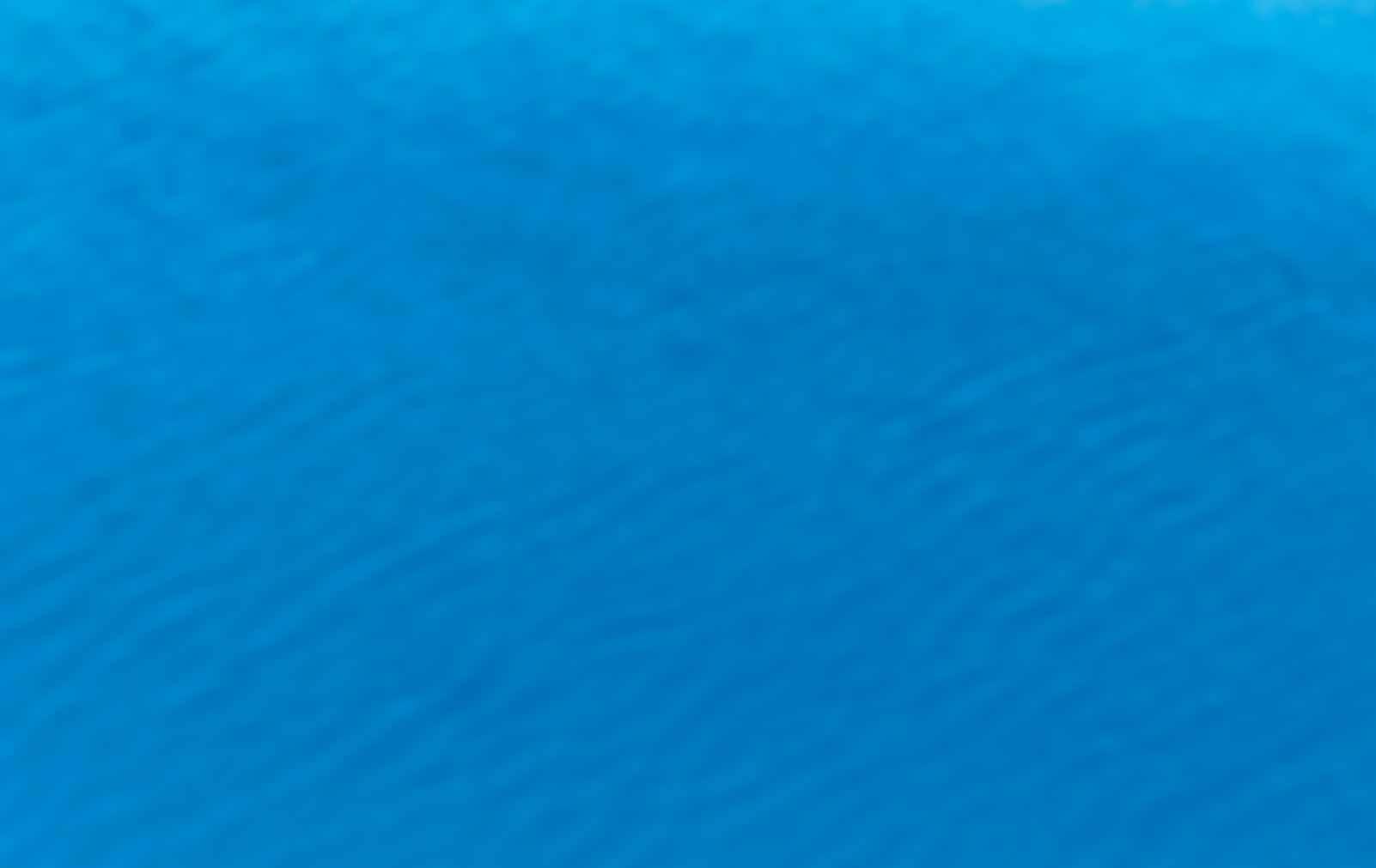The National Museum of Natural History 50 years in
Mdina 1973-2023


A PHOTOGRAPHIC JOURNEY AND BRIEF GUIDE






A PHOTOGRAPHIC JOURNEY AND BRIEF GUIDE



The National Museum of Natural History: 50 years in Mdina, 1973-2023
A Photographic Journey and Brief Guide
Text: John J. Borg
Editing: Margaret Abdilla Cunningham, Godwin Vella
Design: Pierre Balzia
Photography: Pierre Balzia, John J. Borg, Massimo Denaro, Steve Psaila, NMNH Archives
Illustrations: Kimberly Azzopardi
Technical Support: George Agius, Fiona Vella
Printing: Print It Printing Services
ISBN: 978-9918-619-32-0 (hbk)
978-9918-619-33-7 (pbk)
Production: Heritage Malta Publishing © 2023
All rights reserved in all countries.


In spite of a promising beginning since its establishment in the 1920s, the natural history section has always relatively played second fiddle when compared to prehistory and history. This may perhaps seem understandable, but is certainly not justifiable when considering Malta’s wealth in this respect. Destiny was not kind to it either. It bore, and indeed still bears, the brunt of the ravaged collection during the World War II, and consequently the absence of a curator for some twenty years until the mid-1960s, when it was finally decided to re-establish the museum.
The peak of the 1970s following the official inauguration of 1973 was however rather shortlived, with the museum starting a slow but seemingly irreversible decline from the 1980s onwards. Indeed by the 1990s it was, literally, the dumping site of various government departments, including other museums. The collection and displays were in such a poor state that they were the laughing stock of other natural history private collectors.
I write from direct personal experience as a curator with the former Museums Department, and subsequently as senior curator of the National Museum of Natural History, and then other roles within Heritage Malta, spanning some thirty years from mid-1990s onwards. Since then I have witnessed the transition, indeed the transformation of this museum from the pitiable situation described above into a reputable institution, with an exponential growth of its collections, now organized on a solid scientific basis and established as a research reference point in Malta and abroad. This shift was so radical to the extent that it managed to attract major donations from collectors who had vowed never to visit, let alone donate their collections to the museum, which they now consider as the obvious place to refer to as the depository of their prized collections.
The displays and overall presentation may not be glittery and fashionable yet. The fact that it still compares unfavourably with other museums in spite of all the hours of hard work invested in it, depends mostly on its location, albeit a majestic baroque palace, it is clearly not fit for purpose. It is augured that such a matter is solved at the earliest possible, in a way which allows the collections to be presented as they deserve to tell Malta’s natural story. A collection that still reserves surprises and is greatly relevant in the current climate change scenario. The fact that the museum, in spite of all its vicissitudes, has always been and indeed still is extremely popular with children should increase our resolve to make it happen.
Gambin Kenneth COO Heritage Malta
The National Museum of Natural History is housed in the 18th-century Magisterial Palace of Justice in the old walled city of Mdina. The original building served as the seat of the Università, or local Government. In the early years of the 18th century, a new entrance to the city was constructed and Antonio Manoel de Vilhena, Grand Master of the Order of St John of Jerusalem, Rhodes and Malta, re-structured the building at his personal expense, builing the present palace. This is why to this date the palace is still known as Vilhena Palace and gives historical significance to the bronze high-relief plaque of the Grand Master placed over the main door and to Vilhena’s coat of arms sculptured on the main gateway and inside the portico.
The palace has had a varied life-history, from being the seat of the Mdina Government or Università, the Law Courts and local prisons in the 17th and 18th centuries, a temporary hospital for cholera patients during the 1837 epidemic, to a sanatorium for British troops (18581908).
The main façade in the 1940s when the palace served as a hospital for TB patients, popularly known as the Connaught Hospital (1909 – 1956)

In the early years of the 20th century, the palace passed into the hands of the Government of Malta, when in 1909 it was converted into a hospital for tuberculosis. Formally inaugurated by H.R.H. King Edward VII on the 22 April 1909, the hospital was constructed through the generosity of H.R.H. the Duke of Connaught and Strathearn. Thereafter, the building was formally known as Connaught Hospital serving this purpose until 10 January 1956, when the place was closed down.
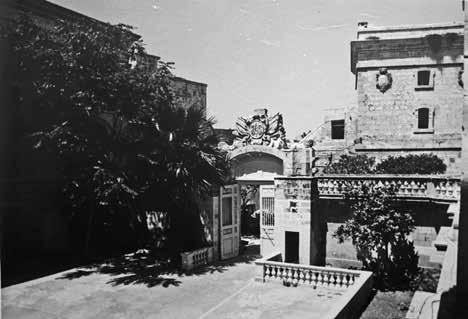
The front courtyard with balustrades and various trees including the large Ailanthus (Tree of Heaven) and the Palm tree; the balustrades on ground level and all the trees, apart from the Palm tree, were removed during the restoration works of 2000
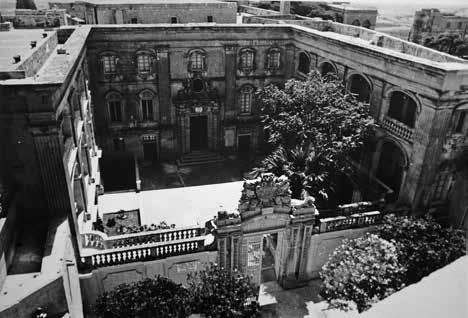
Subsequently, the palace was earmarked to accommodate the Museum of Natural History and Folklore. Unfortunately, surveys carried out in 1966 revealed that bombardments during the World War II on nearby Ta’ Qali airfield had caused cracks and bulging in the outer walls overlooking the bastions. A railway tunnel excavated in the nearby vicinity of the palace foundations in the 1920’s may also have contributed to these structural problems. In order to prevent further deformation of the weakened subsoil, it was considered necessary to dismantle a number of halls in that part of the palace. Thereby, exhibition space available was greatly diminished, and the original idea of housing two museums had to be abandoned.

On 22 June 1973, when the National Museum of Natural History was inaugurated, it consisted of an Earth Sciences Section comprising a Geology and a Palaeontology Halls, and an incomplete Life Sciences Section comprising an Osteology Hall, and a hall for each of the following divisions: Insects, Mollusks, Fishes and Birds. Throughout the following years other display halls, including an exotic mammal hall and a mineral hall, were added. In 1994, the newly established Mdina Local Council occupied part of the Banca Giuratale within the palace, thus splitting the museum into two parts, disrupting the visitor’s flow and leading to the dismantling of the Marine and Animal Skeleton sections.
In the year 2000, major restoration works were carried out on the outer courtyard where all the soft areas were removed and covered with concrete and pebble patches. Later on in 2013, major restoration and consolidation works were carried out along the southern walls of the palace and the underlaying bastions.
The south-facing wall of the palace with the Solarium still on-site (1970s), the latter was dismantled in the early 1990s



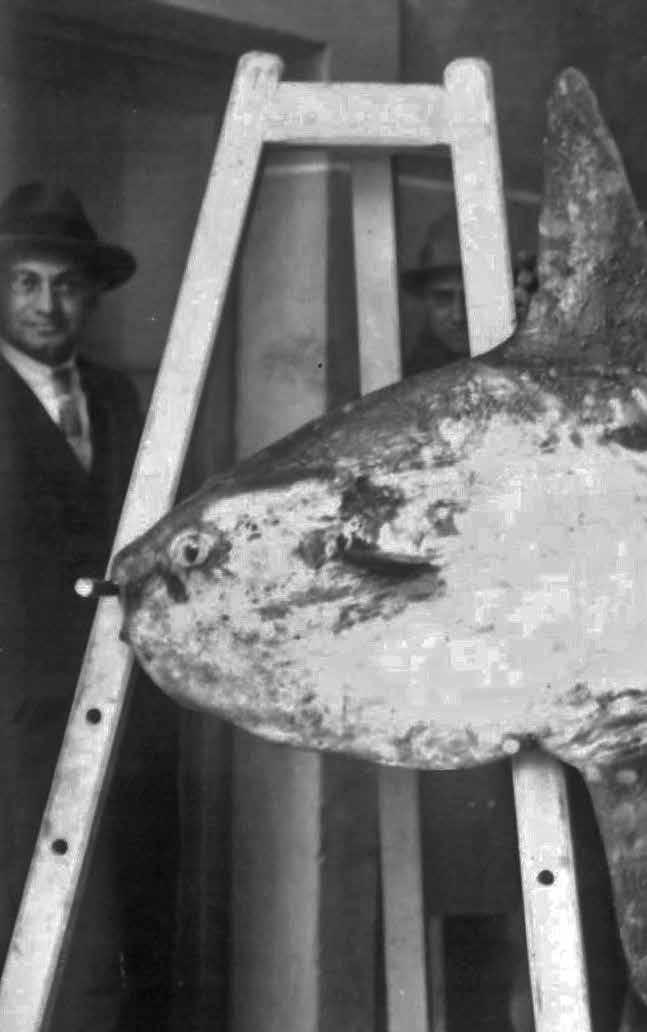
In the early stages of the World War II, the National Museum, housed in Auberge d’Italie in Merchant Street, Valletta, received two direct hits on 7 and 8 April 1942. Thankfully, the Archaeological and Fine Arts material had all been removed from public viewing, as were most of the natural history exhibits, with the exception of some sections still on display. Thus, a considerable number of specimens, including many birds, were lost.
Donations by the general public have always been fundamental in the building up of the National Biological Collections. A historical photo from the National Museum of Natural History archives showing such a donation - a Sunfish Mola mola in the 1920s - said specimen still forms part of the collection

In the first Museum’s report (1946-47), soon after the end of the war, penned by the then curator Joseph G. Baldacchino, the Natural History section starts with a negative and sad note.
“ThecollectionsofHolothuroidea,Echinoidea,AsteroideaOphiuroidea,Crinoidea, Crustacea,Myrapoda,Insecta,Arachnoidea,Pisces,Batrachia,Reptilia,Aves,and Mammalia were totally destroyed on the 7 April 1942 by enemy action. The loss sustainedisundoubtedlyverysevere,butitisnotirreparable.Whenthenecessary fundsareavailableallthedestroyedcollectionsandequipmentcanbegradually replaced. The specimens that escaped damage are still packed and stored in boxes, owing to lack of space and equipment.”

This is what the new museum in Mdina had inherited from the original collections. Most of the specimens in the bird collections and its relative data were also lost during the war. One ledger initiated by Dr Baldacchino where he listed down the various purchases, was found at the National Museum of Archaeology library and subsequently transferred to the National Museum of Natural History in Mdina, provides a glimpse of past acquisitions.

Dr Joseph Baldacchino was appointed Director of the Museum on 20 October 1947 and so, in consequence, the Natural History Section was left without a curator. This is immediately reflected by the absence of the Natural History Section report of 1947-48. The section remained dormant until 1966, when it was decided that a new National Museum of Natural History would be set up in Vilhena Palace in Mdina. The years following World War II had an even more devastating and lasting effect on the remaining collections. The thirty years of storage with no curatorial or regular maintenance whatsoever resulted in an almost useless collection. Most of the data labels were eaten away by silverfish. Dermestid beetles destroyed many specimens to such a degree that when a new museum of natural history was being contemplated in the mid-1960s, very little of the original collections were good enough for display purposes.
Keeping track of all the museum specimens is done through documentation and labelling of each and every specimen - two old labels dating back to the early years of the 20th century

During the setting up of the displays in the late 1960s and in the following years several collections of various taxa and considerable quantities were purchased, most notably was the bird collection of Vincenzo and and Carmelo De Lucca, this collection consisted of 516 birds of 239 species, most of which were used for the setting up of the original displays. Hundreds of insects were also purchased for display purposes

 A photograph of a selection of butterflies that was intended for a guidebook on Maltese Lepidoptera
A photograph of a selection of butterflies that was intended for a guidebook on Maltese Lepidoptera
The Temi Conti’s private collection was auctioned off in 1979 and the museum only managed to acquire 99 birds of 69 species from the 600 birds in his collection, as well as a small portion of his vast entomological collection. Another private collection that was for some years open for public viewing at the owner’s residence in Naxxar was that of Anthony Sammut. This collection of 359 birds and a number of mammals was acquired by the museum in 1980.
A collection of mammals and reptiles on display at the Birds’ Museum in Naxxar owned by Mr Anthony Sammut; today these specimens form part of the National Museum of Natural History collections and are on display
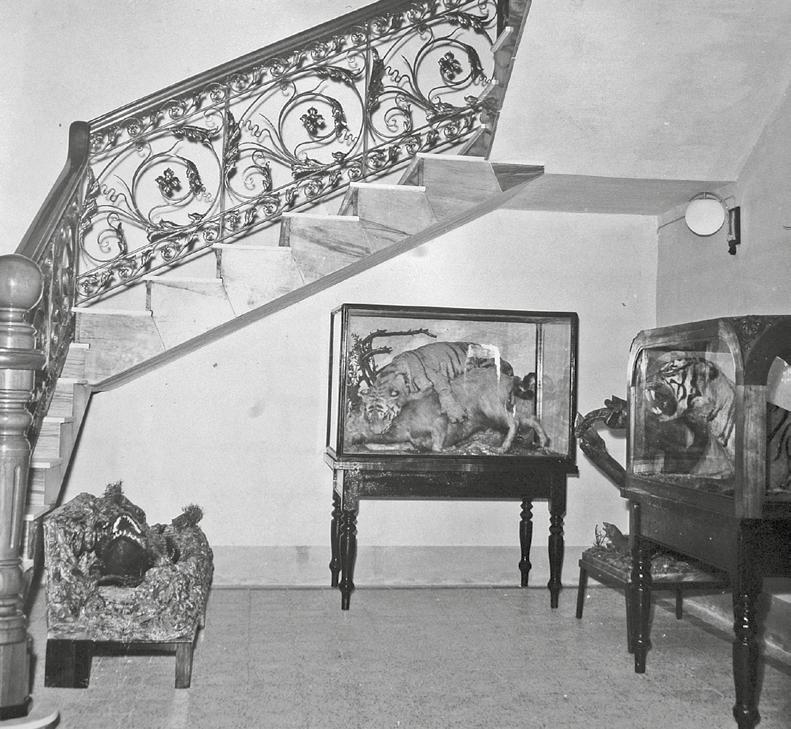
In the first two decades, the collections were comparatively small and lacking numerous species of local interest. Through the years, the collections continued to grow but proper storage was always lacking and in due course several specimens were lost to dermestid beetles, silverfish and mould.
The Conchology collection in 1999 - soon after the specimens were cleaned and catalogued and stored in appropriate cabinets


Two major positive impacts on the Natural History Museum and its collections took place in 2002. The first was when the new Cultural Heritage Act was passed and the Museums Department was transformed into a government agency, giving almost equal importance to all sites and museums. The second was a radical change in the museum’s management. These led to a major transformation of the museum’s approach, vision and most important of all, its collections.
The stuffed and mounted bird collection in 2000 before conservation work and a new storage system was set up

In the period of 2001-2003, the National Museum of Natural History underwent a drastic overhaul in most of the display areas, but especially in the reference collections. Since there was a lack of constant surveillance of the collections in past years, a number of specimens were badly damaged or completely destroyed. During this excursive, a number of specimens from the old museum collections, stored and apparently forgotten, were discovered in the palace’s lower floors and prison cells. Among these there were: a large collection of shells, a coral collection, several desiccated specimens inside jars previously held in wet storage, and the Annetto Caruana and Andrew Leith Adams Quaternary Bone Collection that was once housed in the Gabinetto delle Curiosità at the Bibliotheca in Valletta.
Elephant molars, one of a large collection of Quaternary animal bones from the Andrew Leith Adams collection, believed to have been lost during the war and were rediscovered inside one of the lower rooms in the museum, now restored and placed in the Palaeontology reference collection

The year 2005 is considered a milestone in collections’ management and storage facilities. A compact shelving system was installed in the museum which led to a complete overhaul of the ornithological collections. New storage facilities for the ornithological, entomological and conchological collections were ordered, while a digitised catalogue of the collections was initiated in 2001. Several of the collections grew exponentially over the past two decades, with the ornithological collection increasing from 1,762 in 1999 to almost 10,000 specimens by 2023. The same can be said for the Conchology and Entomological collections, both of which now numbering into thousands of specimens. The most recent upgrade to the collections was carried out in early 2023 with new storage cabinets provided for the Quaternary Bone Collections.
Stepping

Throughout the course of this exercise, it was noted that the old catalogue numbers did not match the labels on most specimens, while several mounted birds were not even catalogued. The updating and correcting of numerous inaccuracies that have appeared in print from time to time was a major headache, as these included discrepancies in the date reported in publications and those entered in the museum’s catalogue. Unfortunately, many specimens although known to have been taken locally, are devoid of any data labels, while some other imported species have been erroneously claimed to have been taken locally. The confiscation of birds has been taking place in Malta for several years and illegalities are rampant. Birds are still confiscated regularly by the authorities and up to 2004, all seized birds were sent to the incinerator to be destroyed.
Specimen of a Sociable Plover Vanellus gregarius from the Valletta Museum - from a glass-plate from the Despott Collection - published in the Bulletin of the Museum in 1929

Top right: Arms conservator cleaning and restoring an old hunting shotgun, part of the museum’s collections


Below: In-kind donation of time and expertise - museum volunteers cataloguing the Conchology Collection
Most of the curatorial work is carried out by the museum curators but a small team of dedicated volounteers commit a lot of time, energy and expertise to maintain the collections in excellent condition. In the early years, the museum had a ‘Friends of the Natural History Museum’ team of collectors but, since the late 1990s, this group was no longer functioning. During the 2000s, the Conchology Collection benefited from a team of dedicated researchers who took care of the collection and along the years continued to increase it. Throughout the last twenty years, several individuals have kindly dedicated their free time to the museum.
 Top left: restored doublebarrelled hunting shotgun
Top left: restored doublebarrelled hunting shotgun
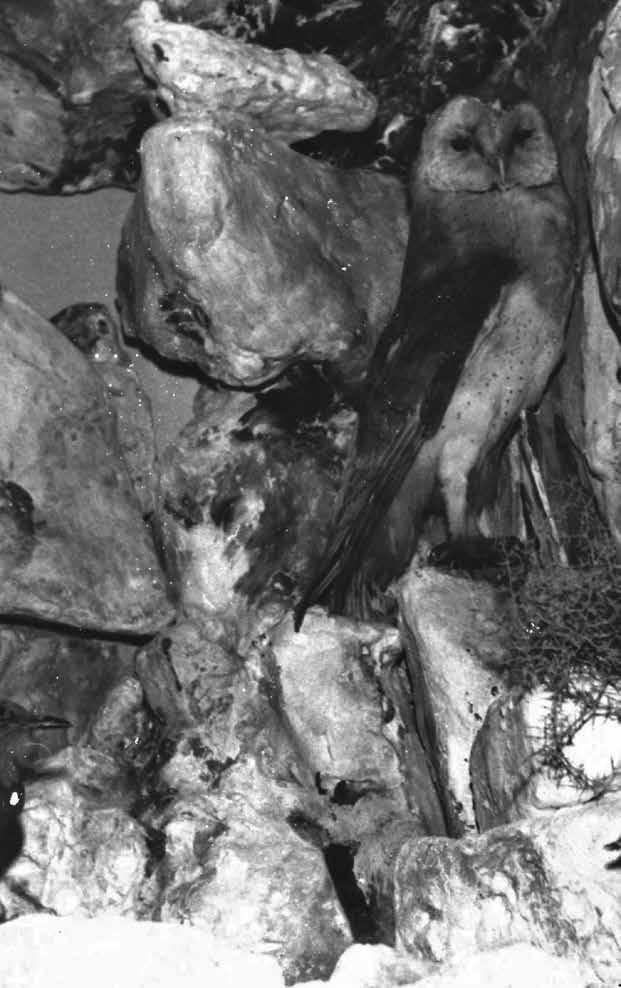
On 23 June 1973, the museum opened its doors to the general public. Through the main portico visitors crossed the wide yard flanked with flowers and trees flowing towards the main gate to purchase their admission ticket. Awaiting them were a number of halls showcasing the rocks and fossils of the Maltese Islands, exhibits of birds, their habits and habitats, a section on local and foreign shells, various insect groups and several animal skeletons, all displayed in their respective sections. From the start, the museum became quite popular with the locals, particularly those interested in birds, hunters and trappers.

In a short period of time, following the opening of the museum, the thematic birds display was replaced with a collection of locally occurring birds, presented in a systematic manner. In the following years, more displays were added: a collection of local and exotic mammals, local fish and a small selection of Louis Mizzi’s vast Mineral Collection were put on display. A Cactus Garden was set up on the roof of the building, utilising the solarium for several delicate species. Under the alcoves in the main courtyard, a Marine Aquarium was also set up.
The Cactus Garden on the museum’s roof, with the solarium at the back which was utilised to house indoor plants; the garden had to be removed during the early years of the 1990s as a result of plant roots penetrating and damaging the roof
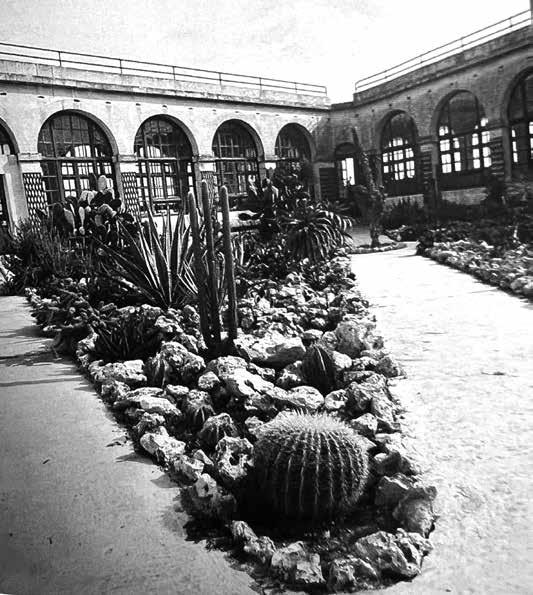
Unfortunately, both sections, although highly popular, had to be closed soon after. Along the years, some of the old displays were replaced with new and modern ones. Structural problems compelled some halls to be closed down, among these was the mammals display. A smaller one was set up in a room in the lower halls where a selection of mammals, split into different groups (primates, carnivores and marsupials) remained open for a considerable number of years. This was eventually taken down to be replaced with a new setup, created in 2023 in the original Mammal Halls on the first floor. The original insect display also had to be dismantled after most of the specimens faded due to lack of protection against strong UV lights and a small display was set up in a dark room with intelligent lighting.
The old Mammals Display which had to be dismantled due to structural issuesthe baboons in the middle showcase were gifted to the President of the Republic of Malta by the late Libyan leader Muammar Gaddafi, along with a number of mammals and birds originating from Libya

The Mammals Display (Primates) on exhibit throughout the first decade of the 2000s
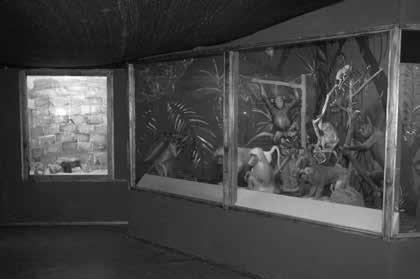
In 2007, the Minerals Display, originally set up in alphabetical order and exhibited relatively too high for young children to see, was replaced and the exhibited according to their chemical composition in low-lying flat showcases.
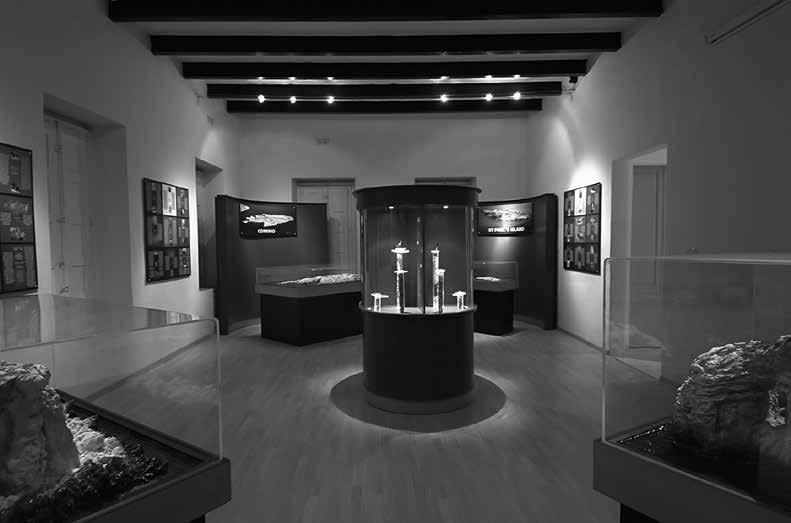
In the early 2000s, a display on the importance of small islands was laid out. The 3D models of the Island of Filfla, Fungus Rock, Comino and Selmunett Islands were created by the museum model maker. Some years later, this display was dismantled and removed from the upper floors to be re-arranged in a smaller hall on the ground floor.
The islands at the Ecological Importance display on the upper floors of the museum in 2018, which later were moved down to the ground floor, serving as an introduction to the Maltese Islands
Another new display hall is that of Human Evolution (Martin Thake’s Hall). The display, consisting of museum replicas of the major hominid species presented to the museum by the resident teacher Mr Martin Thake, highlights various aspects of human evolution, primarily the enlargement of the brain.

A marine section was opened in the early years of the 2000’s, featuring local species of fish, crustaceans and cetaceans. Following the documented breeding of marine turtles on Maltese beaches in recent years, a display on the breeding of the Loggerhead turtle Caretta caretta and several conservation issues was presented. A sculpture depicting the emerging baby turtles was created for the museum by Maltese artist Charles Sammut.
The Conchology Display in the early 2000s highlighting mostly exotic species, eventually dismantled and set up in a different format, showcasing mainly local species, in 2020
In the summer of 2021, during the Covid pandemic, the large hall hosting the Birds’ Collection was reorganised with a new lighting system and a display setup. The new display focused on Maltese habitats with large blow-ups as background highlighting a selection of different localities, from the Għadira Nature Reserve in Mellieħa to the woodland at Buskett, and its adjacent valley, Wied il-Luq. Another display showed the cliffs at Ta’ Ċenċ, Gozo, with its diurnal and nocturnal fauna. A small arrangement on Maltese breeding birds, bird hunting and trapping, and one on ornithological studies, completed the exhibit.
The North Sea Cliffs and their breeding seabirds (2002-2017) - a small diorama highlighting Gannets and Auks breeding along the seacliffs in the North Atlantic
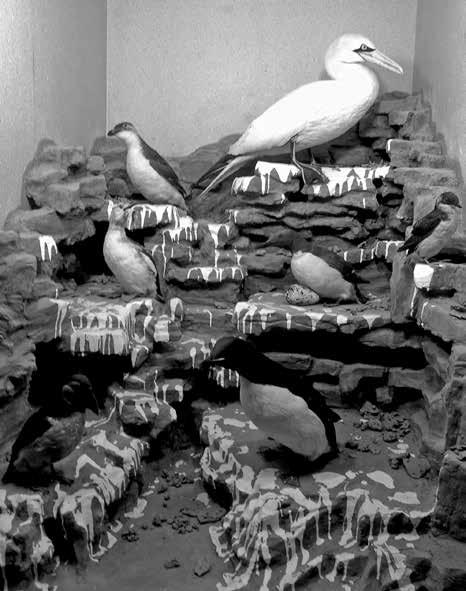
At the same time, a display of specimens prepared in jars (wet-collection) was also opened for public viewing. In the spring of 2023, the new Mammal Halls were opened to the public. One room is dedicated to the local mammalian fauna, from shrews and bats to rats, mice, rabbits and weasels. A mounted specimen of the Maltese Cow is also on display in this hall. The second, larger hall presents a selection of primates and carnivorous mammals. Most of the specimens originate from the old collections, but a small number of recent acquisitions, such as the Black Bear, Mountain Lions and American Wild Cats, complete the display.
Marine Hall (2016): vertebrae and ribs of a stranded whale, date and provenance unknown


Over the years, the museum presented the public with a number of exhibitions mostly with a nature theme. These were mainly set up either by individuals showcasing their artwork, or internally prepared specimens highlighting the museum’s collections. In the first half of the museum’s life in Mdina, exhibitions were few due to the lack of space available, but in 1999, the museum acquired a large hall, part of the Vilhena Palace, which formerly had been the Maltacom offices. This hall, located on the ground floor of the museum, provided the much-needed space for exhibitions ranging from nature photography to artwork, to showcasing Heritage Malta’s Conservation Division, as well as fieldwork carried out by the museum curator.
The National Museum of Natural History had campaigned for the protection and appreciation of our bats through numerous temporary exhibitions

After the annexing of this new hall, an exhibition entitled ‘Heritage at Risk’ was set up in collaboration with the Institute of Conservation of Heritage Malta (ICMCH), followed by another, this time jointly with the Palace Armoury entitled ‘Arms and Armour Inspired by Nature’. Among the numerous thematic exhibitions, there was one on Fossil Fish (Scales in Stone), Fossil Trilobites and Ammonites, and the Great Auk, the last two showcasing specimens from the private collections of Mr Michael Gatt. ‘Naturalists in a French Guiana’ exhibition highlighted the work carried out in South America by the museum curator and a small team of Maltese entomologists.
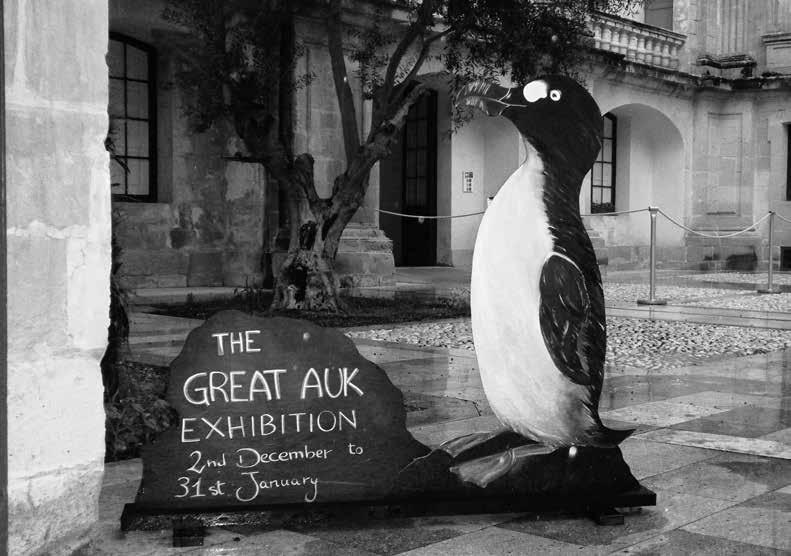
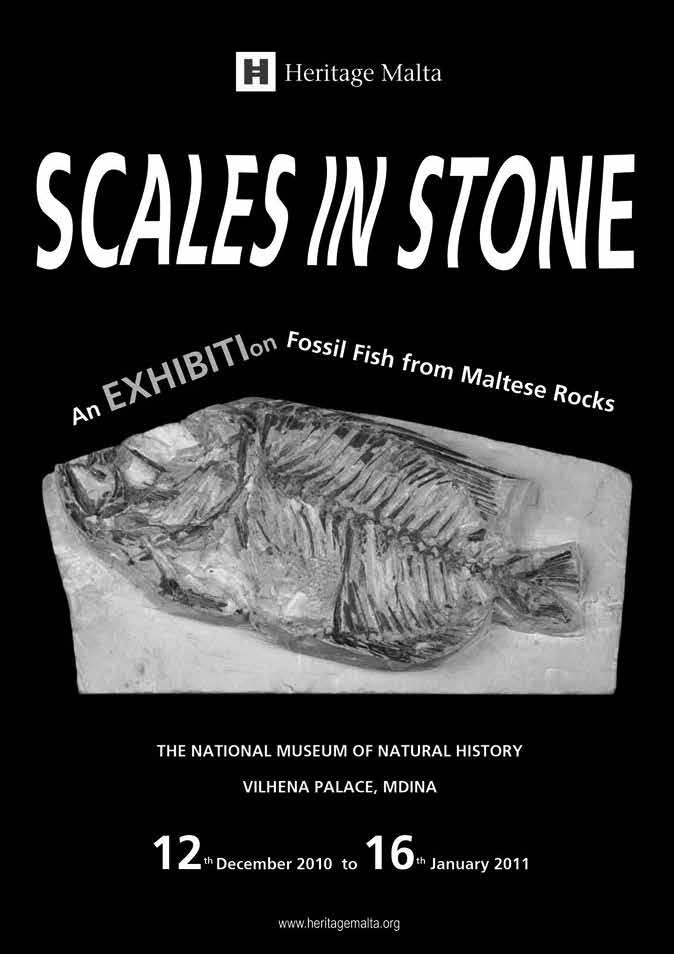
One of the numerous exhibitions held at the National Museum of Natural History was that of a generous donation by Guido Lanfranco which, apart from specimens and books, he also donated all his original prints used in his publications; above is a selection of plates from his book on Maltese fish which were exhibited
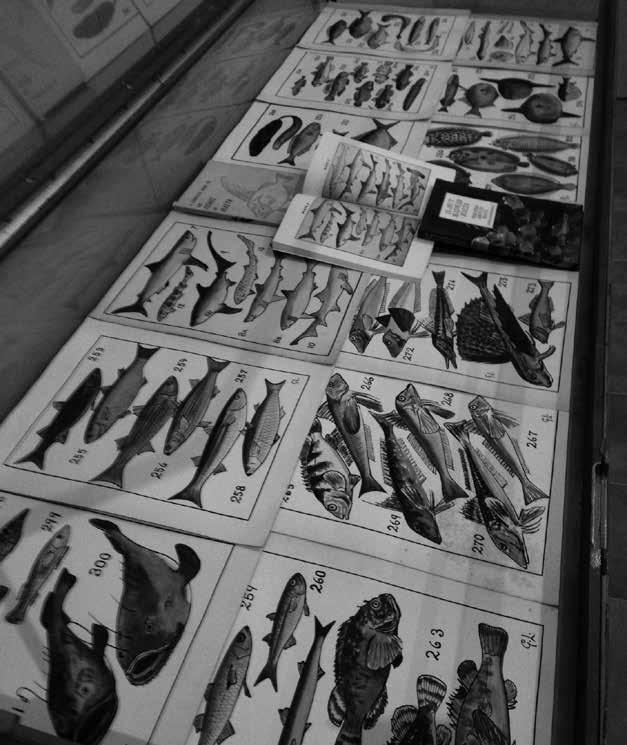
On the 30th anniversary of the museum’s establishment at Mdina, an exhibition entitled ‘Nature in Crafts’ was set up from 23 November to 7 December 2003. It featured the talents of three artisanal artists, Marika Camilleri (Maltese lace), Consiglia Debono (recycled material) and Annamaria Gatt (cross-stitch), displaying nature-themed exhibits.
One of the major exhibitions set up by the museum was the Egyptian mummy in 2008. Apart from the mummy itself and its sarcophagus, various animal statues were displayed, along with stuffed and mounted animals from the museum’s collection.
The talented Maltese artist, Andrew Micallef, also showcased his talent at the museum no less than three times in 1989, 2015 and 2018. His collection of paintings, depicting many different species of birds occurring on the Maltese Islands, never ceased to fascinate all those who visited them. Following the generous donation by Guido Lanfranco, the collection of all his original artworks was also set up in a temporary display in 2015.
One of the most successful exhibitions held at the National Museum of Natural History was that of the Ancient Animal Gods of Egypt where a human mummy was also placed on display - at the back one can see the lid of the wooden sarcophagus

1973 Botanical Art in collaboration with the Natural History Society of Malta
1977 Bird Paintings (Birds of the Maltese Archipelago publication) by Chloe Talbot Kelly and Donald Watson
1977 Bird Paintings and Drawings by Alfred Fenech
1977 Nature-themed paintings and drawings by Natural History Society of Malta
1987 An exhibition of fossils, insect, etc, by the Friends of the Natural History Museum
1989 Two exhibitions (fossils, birds, insects etc.) set up by the Friends of the Natural History Museum
2003 Nature in Crafts: Commemorating 30 Years of the National Museum of Natural History (NMNH) in Mdina
2003 Nature in Maltese Stamps in collaboration with MaltaPost
2004 Take courage I have conquered the World – Sculptures and painting. Catholic Charismatic Renewal
2004 The Magic of Art – by Sina Farrugia Micallef and Cypriot Ceramists
2004 Brushstroke – Art Exhibition by MCAST Students
2007 Nostalgia – Art Exhibition by Chris Ebejer
2007 Limestone Perceptions by Joseph Soler
2008 Mirrors of Life – Art Exhibition, various artists
2008 Autofictions by Alex Ploger
2008 The Egyptian Mummy Exhibition by the NMNH
2009 Lace in the Street by Klabb Bizzilla Maltija
2009 Heritage at Risk in collaboration with the ICMCH
2010 The Guido Lanfranco and Carmelo DeLucca donations
2010 Walking in Africa - A photographic exhibition by Guido Bonnet
2010 The Lombard Bank Mineral Donation
2010 Rocks, Coral and Minerals in Jewellery by The Malta Customs Donation
2011 Scales in Stone: An exhibition on fossil fish from Maltese rocks
2011 The Year of the Rabbit by NMNH
2011 Ancient Life Forms: Trilobites and Ammonites in collaboration with Mr Michael Gatt
2011 The Beauty of Birds - A photographic exhibition by BirdLife Malta
2011 Terrible Lizards – The dinosaurs of Richard Owen from the NMNH collections
2011 Charles Darwin: 200 years from his birth in collaboration with the British Council, Malta
2014 The Great Auk: Extinction is forever.... or is it? - NMNH in collaboration with Mr Michael Gatt
2015 Cotidie, The Magic of Everyday – A photographic exhibition by Chinese photographer Kitty Chou
2015 Birdscapes and other works – An exhibition of paintings by Andrew Micallef
2017 Wildlife Photography (Malta) exhibition - Winning photographs of the first Wildlife Photographic Competition organised by the NMNH
2018 South America – Choco - A photographic exhibition by Guido Bonett
2018 Art Exhibition by Andrew Micallef
2018 Preserved in Stone – Fossil from the National Collections
2018 Beat Plastic Pollution focusing on the negative impact of plastic pollution on the occasion of World Environment Day
2018 Halloween Animals and Dark Traditions on animals associated with death, witchcraft and other dark traditions
2018 San Martin - thematic exhibition about animals, particularly birds (Kingfishers), associated with St Martin’s feast
2023 Botanical Portraits by Carmen Forder and wood turned pieces by Ron Forder
2023 The National Museum of Natural History: 50 Years in Mdina - A Photographic Journey
HM staff member 3D-scanning the skeleton collection (pre digitisation unit) - digitisation of the collections is one of the prime objectives of the museum, thus making all the specimens available online
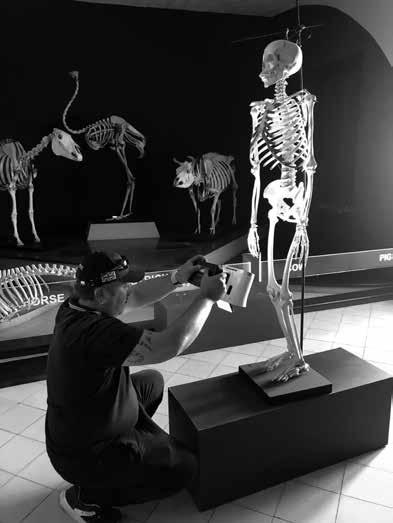






A selection of exhibition posters
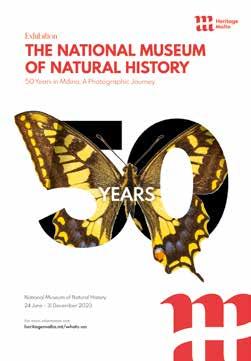



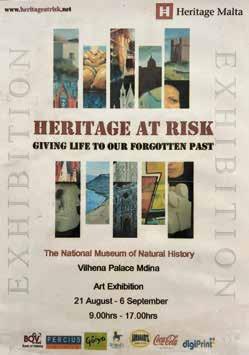


Once the decision to re-establish the Natural History Section within the Museums Department had been taken, a team of three persons was set up in order to start working towards the institution of a Natural History Museum. The team was led by Professor Harry Micallef, L.P., Ph.C., B.Sc. Hons. (Lond.), Ph.D (Lond.), F.Z.S. and Acting Head of the Department of Biology, Royal University of Malta. He occupied the post of part-time curator between 1966 and 1970. Born in Ħamrun on 22 October 1918, Micallef studied at the Lyceum and the Royal University of Malta. In 1938, he graduated as a teacher and two years later as a solicitor. In 1945, he became a pharmaceutical chemist and the University employed him as a demonstrator in pharmacognosy, and later in biology. In 1959, he was appointed lecturer in biology, then Head of the Biology Department of the same university in 1964 and became professor in 1967. Between 1962 and 1963, he served as a demonstrator in zoology at the Queen Mary College, University of London. Micallef was a member of the Faculty Board of Science and of the Senate of the University of Malta. He was also a life member of the Marine Biological Association (UK), a scientific fellow of the Zoological Society of London, and a member of the Mediterranean Association of Marine Biology and Oceanology. His main responsibility was the setting up of the new museum in Vilhena Palace. Unfortunately, Micallef’s contribution to the new museum was very limited as he passed away on 3 October 1970.

Another member of the Natural History Section was Dr Carmelo De Lucca B.Sc. M.D., F.R.E.S. whose role as part-time Assistant Curator was responsible for the Ornithology and Entomology Sections from 1967 to 1971. De Lucca was born at Msida on 24 November 1916. He studied at the Lyceum and later at the Royal University of Malta from where he graduated as Bachelor of Science in Pharmaceutical Chemistry in 1939. Furthering his studies, he graduated in Medicine in 1943. During the period between 1943 and 1946, he served as a resident medical officer, and from 1946 until his death, as district medical officer at the village of Għargħur. Without a doubt, De Lucca’s earlier interest in natural history must be attributed to his father Vincenzo, himself an ornithologist of some standing. It must have been during his birding days that interest in entomology, and particularly in the Lepidoptera, was kindled. He had several contacts with foreign ornithologists, especially servicemen stationed at the radar station at Madliena (not far from Għargħur where he resided), or from other stations in Malta. His lifelong friendship with the Maltese entomologist Anthony Valletta helped a great deal in strengthening his interest in the Lepidoptera.

The main works of Dr Carmelo De Lucca were dedicated to ornithology where he managed to obtain valuable data on the migration of birds on the Maltese Islands through his numerous contacts. He published his results both locally, as well as internationally in acclaimed journals such as the Ibis (British Ornithologists Union) and the Rivista Italiana di Ornitologia. His main ornithological contribution was his Checklist to the Birds of Malta published in 1969.
When the idea of setting up a Natural History Museum during the early part of 1967 became a reality, Dr De Lucca was appointed as assistant curator in charge of birds and insects. Unfortunately, with his untimely death on 6 March 1971, Dr De Lucca saw little of the final museum itself.
The third member of the Natural History Section team, and by far the most enduring and contributing, was Dr George Zammit Maempel, M.Q.R., DSc (Honoris Causa), Phc, MD who was appointed part-time Assistant Curator of geology, palaeontology and Għar Dalam Cave in 1967, a post he occupied until 1987.

Dr George Zammit Maempel was born in Naxxar on 2 May 1925. He was educated at St Aloysius College and the Royal University of Malta, from where he obtained a Diploma in Pharmacy in 1948, graduating as Doctor of Medicine and Surgery in 1952. He undertook a course in geological studies at the College of Arts, Science and Technology (1966-1968) and was also a recipient of a UNESCO Fellowship in Museography (1969). His interest in Maltese geology and palaeontology originally developed in his university years, which persisted throughout his life. In 1988, he gave up his medical practice to devote his time to palaeontology and museum curatorship, and became part-time curator of geology, palaeontology and Għar Dalam Cave and Museum until 2002. Dr Zammit Maempel not only planned and set up the geology and palaeontology display at the National Museum of Natural History, but was also responsible for the setting up of the new hall at Għar Dalam, the latter was officially opened to the public on 8 December 2003.
From his palaeontological studies, Dr Zammit Maempel described new species of Maltese Tertiary fossils such as the tiny sea urchin Coelopleurus melitensis and the burrowing Kuphus melitensis
After the untimely death of Harry Micallef and Carmelo De Lucca, Joe Vella-Gaffiero was entrusted with the setting up of the zoological displays of the Vilhena Museum. Vella-Gaffiero was born in Santa Venera on 13 July 1941, and educated at St Aloysius College. He co-authored with Dr David A. Bannerman The Birds of the Maltese Archipelago published by the Museum’s Department in 1976 and was instrumental in the first and only issue of the Natural Heritage, the museum’s bulletin published in December 1975. He kept his post as an Officer-in-charge until his early retirement in early 2001, when it was taken over by the present author.

The current Senior Curator, John J. Borg joined the ranks of the Museums Department in 1992 as a Custodian and Guide, where soon after he joined and assisted Dr Zammit Maempel at Għar Dalam, cataloguing the Bone Collection. In 1999, he was appointed Museum Officer (Natural History), soon after the early retirement of Joe Vella Gaffiero, the Senior Curator of Archaeology Ms Susannah Depasquale was entrusted with the management of the museum. After a short period, the role passed on the Senior Curators of Ethnography: Mr Kenneth Gambin (2001–2006), Mr Sandro Debono (2006-2007) and Mr Godwin Vella (2007). John was appointed Curator (2005-2007), later as, Principal Curator (2007-2011) and finally Senior Curator (2011 – present). A major revision of the collections and display area was undertaken with the collections amounting to a few thousand specimens, growing to over 700,000 specimens.
John is a field biologist where he graduated with an MSc (Melit.) from the University of Malta. He specialises in ornithology, micro-mammal ecology and the history of natural history studies on the Maltese Islands.

In 2012, the first female curator of Natural History joined the curatorial team in Mdina. Ms Stephanie Sammut MSc (Biol) took over the responsibility of the wet collection, herbaria and coral collections. She was also responsible for the Integrated Pest Management (IPM) of all the Heritage Malta museums and sites. Moreover, she carried out biological surveys on the UNESCO World Heritage Sites on the Maltese Islands. Stephanie left the museum in late 2022 when she moved on to teaching conservation work in museums at MCAST.

The museum is frequented daily by school children, so the need for a resident teacher in the museum was always felt to prepare and deliver educational programs about natural wonders of our islands. In the 1990s, Paul Sammut a biology teacher, was on loan from the Education Department to assist in the reorganisation of the Entomological collections and who serves as a volunteer up to this day. Mr Martin Thake (MSc.), a teacher from the Junior College, also joined the team in 1991 and continued up to 2002.
Teachers on Loan - The Human Evolution Hall, dedicated to the museum educator Mr Martin Thake who also donated the human skull collection currently still on display
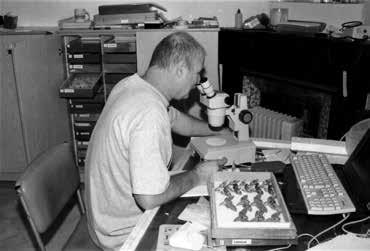
In 2020, the curatorial team was joined by Ms Carmen Tanti as Coordinator Curatorial Support who assists the curators on numerous tasks.
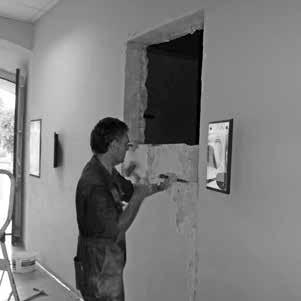
Along the years, from the times of the Museums Department (1973-2002) and then with Heritage Malta (2002 to present times), numerous individuals were employed in various roles from teachers to messengers to model makers to general hands, carpenters, etc., according to the exigencies of the museum.
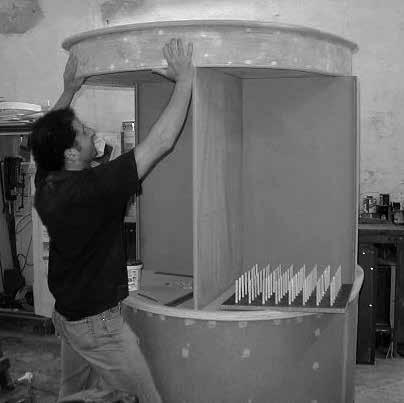
Two of these stand out more than others. Oliver Spiteri, who built from scratch the showcases and bases for the displays from 1982 up to 2010 and Model Maker/Artist Victor Buhagiar who prepared all the artwork and models for display.
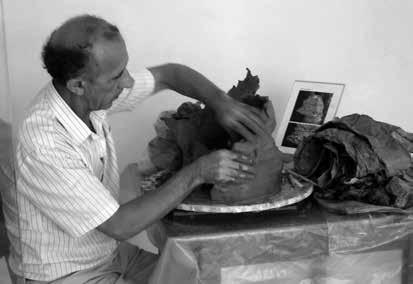
Curatorial Staff
Professor Dr Harry Micallef – Part-time Curator (1966-1970)
Dr Carmelo De Lucca – Part-time Curator Entomology & Ornithology (1966-1970)
Dr George Zammit Maempel part-time Curator Geology & Palaentology (1966 - 2002)
Joe Vella Gaffiero – Officer-in-Charge (1972-2000)
Susannah Depasquale – Curator Archaeology (1999)
Kenneth Gambin – Senior Curator Ethnography/Natural History (2001-2006)
Sandro Debono – Senior Curator Ethnography/Natural History (2006-2007)
Godwin Vella – Senior Curator Ethnography/Natural History (2007)
John J. Borg – Officer-in-Charge (1999-2005), Curator (2005-2007), Principal Curator (2007-2011) and Senior Curator (2011 – present)
Stephanie Sammut - Curator (2013 – 2022)
Carmen Tanti – Coordinator Curatorial Support (2020 - present)
Educator
Martin Thake – Teacher on loan (1991-2002)
Technicians
Joseph Formosa - Messenger
Carmelo Grixti – Messenger
Oliver Spiteri – Carpenter
Anthony Pirotta - Carpenter
Victor Buhagiar - Model Maker
Charles Gauci - General Hand
Anthony Cordina - General Assistant
Long-term Volunteers
Paul Sammut
Charles Sammut
Carmel Cachia
Constantine Mifsud
Thousands of school children have visited the museum throughout its 50 years in Mdina, making it a sparking light for some to later became scientists, naturalists and environmental managers, while for others it sparked a kindle in their appreciation towards our natural environment
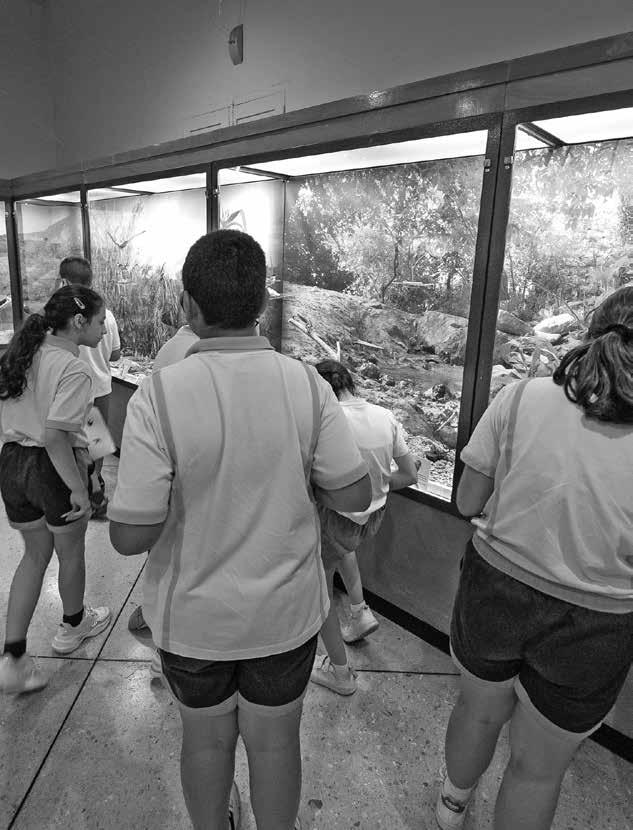

The museum collections serve as study material for numerous projects, most of which were carried out by the curators, as well as under their supervision while assisting local and foreign researchers. Specimens in the museum collections covered diverse species, such as marine turtles, birds and bats and various insect groups. Studies covered mostly taxonomy, but a fair number of genetic studies were also carried out. In the last decade, the museum worked closely with foreign museums such as the Natural History Museum of London, Naturalis of Holland and the Musée National d’Histoire Naturelle of Paris on a number of projects ranging from palaeontology, ornithology and entomology.
A small selection of fossil sharks’ teeth from the Palaenotological Collection; the majority of these fossil collections originate from Maltese rock and shark’s teeth are some of the more commonly found specimens

Carcasses of birds deposited in the museum served as study material for several students. Two students separately dissected a selection of marine birds, such as shearwaters and storm-petrels, cormorants, gannets and various species of gulls, to study their diet as well as to identify any plastic material in their stomach. Dietary studies by analysing regurgitations (pellets) have also been carried out on wintering Short-Eared Owls and Common Kestrels by the curators. The museum building and grounds also provide space for research projects on diverse topics from the monitoring of breeding Blue Rock Thrushes, Mediterranean Flycatchers and Tree Sparrows to wintering Long-Eared bats and Maghrebian Bats, as well as monitoring the reptile’s population (Wall Lizards, Ocellated Skinks and Western Whip Snakes) within the museum grounds.
Poster highlighting the history of the ornithological collections in the museum, presented in Florence during the Bird Curators Meeting in 2010

Above: Bone remains from owl pellets, one of the numerous projects undertaken by the curators aimed at dietary studies in raptors and seabirds

Right above and below: Young Blue Rock Trushes Monticola solitarius (Merill), Malta’s National Bird have been breeding inside the museum building for over a decade, so each year the chicks are individually ringed


Conference poster commemorating the re-opening of the Museo Regionale di Scienze Naturali di Comiso, Sicily - the Senior Curator was one of the speakers
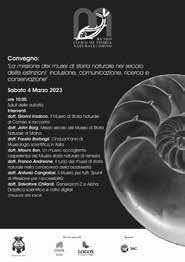
Left: Student studying the Quaternary elephant molar collections of the museum for a PhD dissertation

Below: The rainforest of French Guiana in South America - the Senior Curator censusing waterbirds along the Sinnamarie River in 2017

The Quaternary Bone Collection is one of the most sought-after collections for research purpose. Local as well as foreign students have studied, measured and photographed thousands of bones and teeth of elephants, hippopotami and deer for their Masters and Doctoral dissertations.
Research studies are not strictly confined within the walls of the museum, as Curators participated in several research expeditions on the Maltese Islands, as well as overseas. Greece, Cyprus, Crete, Turkey, Libya, Tunisia, Morocco, Madeira, the Azores, Pelagian Islands and as far as French Guiana, in South America, and Antarctica are some of the countries visited. The main topics covered were ornithology, herpetology, terrestrial and marine mammals, and the entomology of these locations. Apart from compiling data on observations, presence and behaviour of the fauna recorded, a photographic record of the species observed was compiled for the Museum Digital Library. The museum Curators also actively participated in conferences, seminars and workshops covering diverse topics of natural history.
Along the years, the museum has also participated in a number of international projects, such as the European Moth Nights first held on the 13-15 August 2004. Several European countries took part and the Malta team was coordinated by the Entomological Society of Malta with a number of moth traps set across the Maltese Islands. One light trap was set up on the museum’s roof, where several species of moths were recorded. The museum continued to participate in this initiative for several years. Joint projects with local entities, such as BirdLife Malta, included the annual visits to the Island of Filfla to monitor the breeding seabird populations, as well as visits to Comino Island to study migratory patterns in birds. Collaborations were held with Nature Trust, the Environment and Resources Authority, the Wild Birds Regulation Unit, the Archaeology Department and the Institute of Earth Systems at the University of Malta, and others.
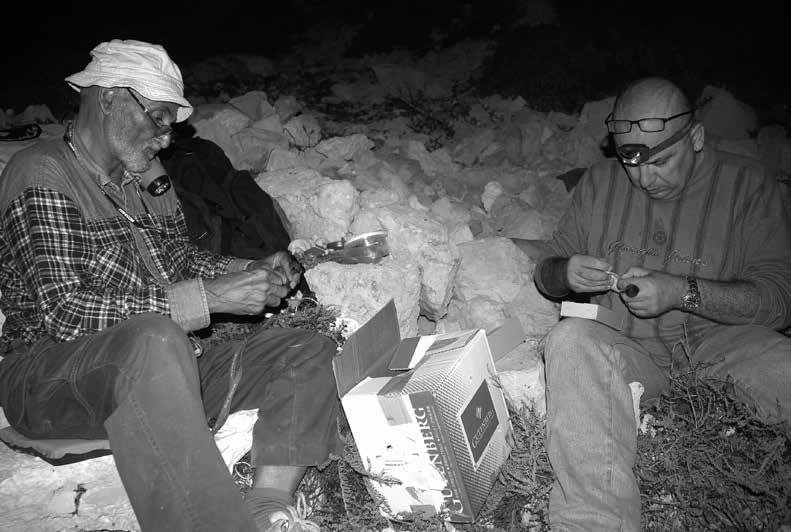
In the last decade, the museum curators were also assisting other departments within Heritage Malta by carrying out biological studies on the megalithic temples, the Hypogeum and the catacombs, measuring growth of bryophytes growing under the protective tents at Ħaġar Qim, Mnajdra and Tarxien, while an Integrated Pest Management (IPM) monitoring program was also set in place. The curators also provided their expertise in the identification of bone remains from several prehistoric burial sites and monuments such as from Tarxien, Bur Megħeż, Skorba, Ta’ Ħaġrat, Salina and the St Paul’s Catacombs.

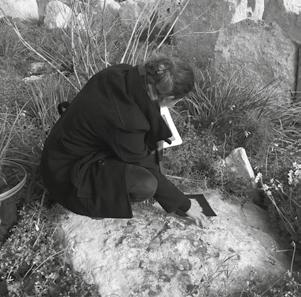
Since the COVID 19 outbreak, the museum also embarked on a long-term project to digitise the entire collections. The majority of specimens where photographed, but a small selection was 3D scanned. The latter was carried out by Heritage Malta’s Digitisation Unit.
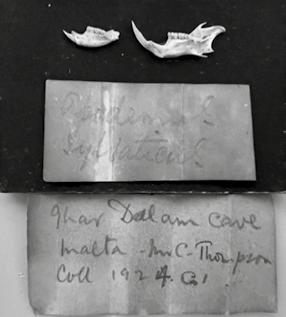

It is not only the flora and fauna that are studied, but also past environment, the effect of climate change, extinction, as well as the life history of past naturalists who contributed to the knowledge of our wildlife and on the history of the collections, the preparators and contributors who placed their collections in this museum.
Top left: Ms Stephanie Sammut, former Curator carrying out Biological Studies at Ħaġar Qim; Top right: Digitising the collections at the NMNH, Right: members from the HM Digitisation Unit 3D scanning the mounted skeleton of Palaeoloxodon falconeri at the G.G. Gemellaro Museum in Palermo, Below: lower jaws of Wood Mouse Apodemus sylvaticus unearthed by Gertrude Caton Thompson from Għar Dalam in 1924
Once Malta joined the European Union in 2004, Malta became eligible for project funding and in 2005, the museum was approached by BirdLife Malta to investigate the possibility of the former becoming a partner in an EU Life + program on the Conservation of Rdum tal-Madonna and the Yelkouan Shearwater colony that breeds there. The project was eventually awarded and was carried out successfully over a four-year period (2006-2010). STERNA (Semantic Web-based Thematic European Reference Network Application) was a collaboration between twelve European natural history museums and institutions that collect and hold content on biodiversity, wildlife and nature in general, to the objectives and realization of a European Digital Library. The STERNA project was supported and partly funded by the eContentplus programme of the European Commission. REMASI was an ItaliaMalta project in which the museum was partnered with the Comune di Bivona, University of Palermo and Legambiente Sicily, where different topics from bird migration, pelagic seabirds and the identification of geosites in Malta and Sicily were the main topics covered in this project. Further studies with the University of Palermo were carried out on Lampedusa, Linosa, Lampione and Marettimo Islands, a project to colour-ring the chicks of the endemic Lesser Crested Terns. This was carried out in Libya in collaboration with the Libyan Environment Agency, ISPRA (Italy) and Tour du Valat (France). Numerous other research projects covering other topics like entomology, conchology and mammals. were carried out in collaboration with the University of Malta, Palermo and others.

One of the primary roles in any museum is to promote its research. studies about its collections, as well as on the habitats and habits of the biota under study. The National Museum of Natural History is no exception and since the early years of its existence, there have been numerous publications and contributions by its Curators.
The first Curator of Natural History, Giuseppe Despott published countless notes and articles on the local fauna, mostly on birds, new sightings and acquisitions of specimens by the museum, and the results of his excavations inside Għar Dalam and other sites of Pleistocene interest. By 1942, as a result of the World War II, all studies ground to a halt and it was almost 30 years later that scientific work was resumed. The Curator of Geology and Palaeontology, George Zammit Maempel published a series of papers on the palaeontology of the Maltese Islands, including papers describing new species to science such as the minute sea urchin Cidaris melitensis, the lizard Lacerta siculimelitensis, and the bi-valve Kuphus melitensis. He also published several other contributions related to Maltese geology, palaeontology and their folklore.
An attempt to publish a museum journal was made in 1975, when the first and only issue of the Natural Heritage was published. It carried a number of contributions, mostly about birds. In 1976, the Officer-in-Charge of the museum co-authored with the British ornithologist David A. Bannerman the voluminous work TheBirdsoftheMalteseArchipelago. This carried a foreword penned by the then Prime Minister Mr Dom Mintoff. The Officer-in-Charge of the museum also published Lists of birds acquired by the museum in Il-Merill, the Malta Ornithological Society (now BirdLife Malta) scientific bulletin. In 1988, G. Mandahl-Barth wrote The shell-bearing land-snails of Malta, a 65-page publication, sponsored by the then Friends of the National Museum of Natural History.
Above: Frontispiece illustration - In 1976, the Museum Department published The Birds of the Maltese Archipelago, co-authored by David Bannerman and Joe Vella-Gaffiero Left: Presentation of a copy of the book Birds of the Maltese Archipelago to Prime Minister Dom Mintoff, who also wrote the Foreword. Present from left to right: Francis Mallia (Director of Museums), Albert Agius Ferrante Administrative Secretary in the Office of the Prime Minister, Dom Mintoff and Joe Vella-Gaffiero (Officer-in-Charge of the museum and co-author)


For almost two decades, there were no contributions and it was in the first decade of the new millennium that a strew of publications, some based on the museum collections, were produced. In 2006, the museum acquired the entomological collection of Mr Guido Lanfranco, and following a year of preparatory work on the Collection, two lists were published. The first one covering the Lepidoptera (Butterflies and Moths) co-authored by Mr Paul Sammut and the Senior Curator John J. Borg, and a second one on the Odonata (dragonflies) by entomologist Mr Godwin Degabriele. Both contributions were published in the journal of the Malta Entomological Society. Contributions were published in local as well as foreign scientific journals. On 23 May 2004, the museum hosted the official launch of the inventory document Important Bird Areas of EU Importance in Malta with the support of the Ministry for Rural Affairs and the Environment, in collaboration with BirdLife Malta. The document was co-authored by John J. Borg and Joe Sultana identifying the important sites for birds in Malta, in view of Malta’s commitment in implementing the Birds Directive 79/409/EC on a national level.
From 2002 up to 2022, over 80 publications were penned by the museum curators and volunteers, including four guide books, The Breeding Birds of Malta (2011), and a monumental monograph titled The History of Ornithology in Malta (2015). The majority of these publications were dedicated to ornithology followed by a variety of different topics ranging from entomology, palaeontology, zooarchaeology, museology and others. These include: ‘A note on the diet of the Long-Eared Bat Plecotus austriacus in Mdina’ (2002) published in a scientific journal, several notes correcting past mistakes made on specimens from the museum collections, and reporting new species for the Maltese Islands. In 2019 and 2020, the Museum started publishing monographs and the following two volumes: An AnnotatedandBibliographicCheck-listoftheMarineMolluscaoftheMalteseIslands penned by the museum’s volunteers Charles Cachia, Constantine Mifsud, Charles I. Sammut and Paul Sammut in 2019, and a year later, Paul Sammut wrote A Systematic and Synonymic List of the Lepidoptera of the Maltese Islands. Forthcoming publications include a catalogue of the Maltese Conchology Collection in the National Museum of Natural History, and the History of the Ornithological Collections of the National Museum of Natural History.

Once the museum opened its doors to the public, the flow of school children visiting the display galleries never subsided. To this day, school children from Kindergarten to Secondary level frequent the museum galleries. Students are either guided through the museum, discussing various topics from biodiversity, ecology, extinction and evolution, or are presented with a specific theme and the visit is carried out in the respective gallery. Thematic events are held for Secondary students as well as for those at higher levels, such as MCAST and University. ‘Inspired by Nature’ was a theme chosen by MCAST students where they had to first draw an insect of their choice, followed by a more detailed painting of the chosen specimen. In the following years of the course, they had to design and present a piece of clothing and jewellery inspired from said specimens. Following their graduation, an exhibition was held in St James Cavalier, Valletta.


The Skeleton Hall provides the raw material for the introduction of animal anatomy. In the Mineral Hall, students learn about the different minerals and ores extracted from the ground and their daily use. Discussions on topics such as overfishing, illegal hunting, overpopulation and many other topics have been covered by students, their teachers and museum staff.
Apart from the inhouse activities, the museum also has an outreach program where curators visit schools, as well as out in the countryside, to provide themed activities. Some of the established events carried out inside the museum are ‘From Scales to Feathers’ where students are introduced to the world of birds, from their origin as the descendants of dinosaurs to the modern-day species. ‘The Life of the Turtle’ is another hands-on event where students learn about marine reptiles, particularly the Loggerhead Turtle. Themed events about bats, moths, fossils, etc., are also regularly carried out in the museum. Another popular theme is that of ‘Heroes and Villains’ where various characters from the Marvel and DC Universe are the topic of the day and how the natural world inspired the creators of these characters. Most of the time, these events have been carried out in collaboration with Heritage Malta’s Education Department.
School visits are carried out on a daily basis with numerous teachers and children making use of the galleries and collections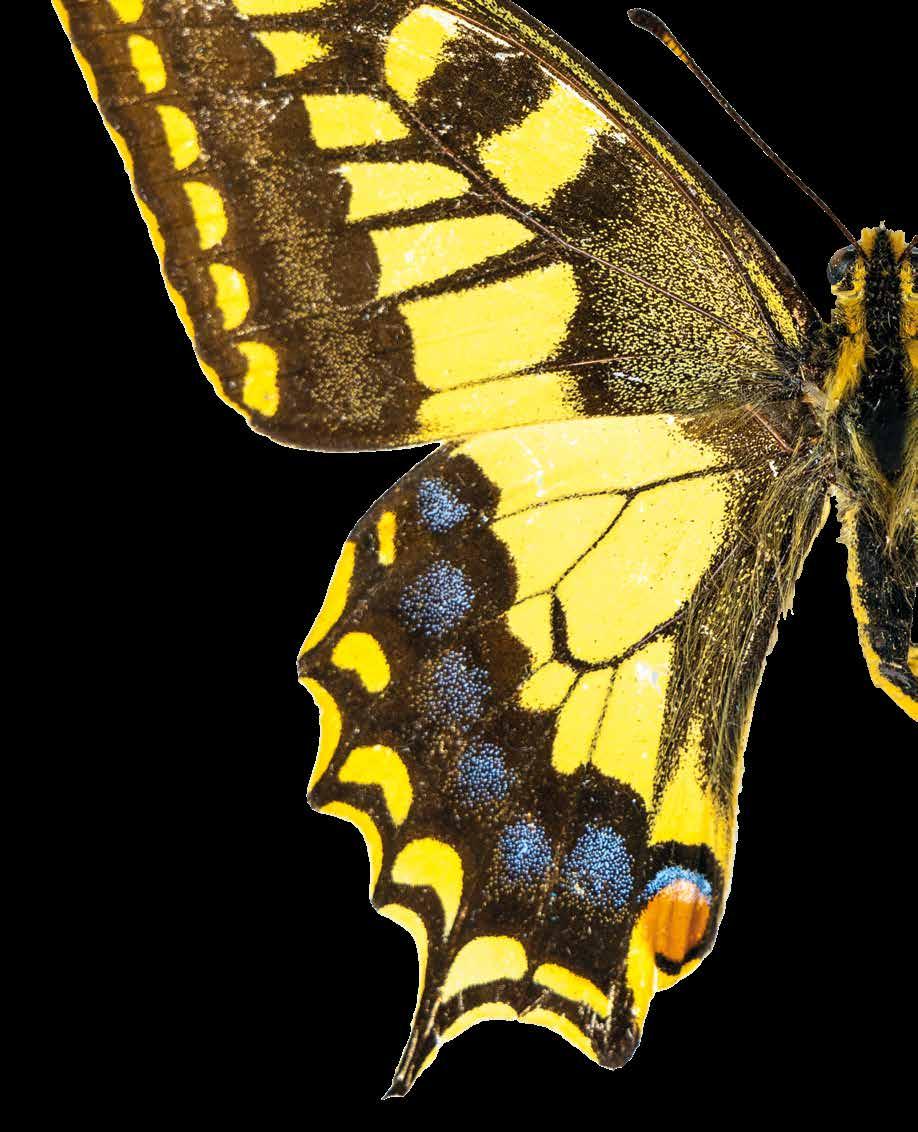


In 2005 Heritage Malta published a comprehensive guide to the National Museum of Natural History. Since then, a number of displays have been taken down and these were replaced by new ones. The museum focuses on the local aspects of natural history ranging from Maltese geology and palaeontology (rocks and fossils) to insects, birds, shells, mammals and fish. Access to the museum is through the main portico, an impressive 18th-century wooden door, recently restored to its former glory. Once inside the main courtyard, one gets the impression of being inside a theatre. In fact the front courtyard (Cuor d’honneur), a unique architectural feature in the Maltese Islands was designed to host open-air theatrical events. The stonework on the façade also incorporates musical instruments. The patron, Grand Master Antonio Manoel de Vilhena, the Portuguese born prince, was a great lover of the arts. Looking carefully at the floor tiles in the courtyard, one can observe fossil remains of sea urchins, mostly Scutella species.

On the right side one can walk towards the reception area to purchase the admission ticket. There is also a small shop and a display depicting the local historical timeline as an introduction to the visitors. A large screen shows snippets of the numerous films shot inside Mdina and the National Museum of Natural History, from silent movies of the 1920s, up to the ever-popular Game of Thrones, and many others.


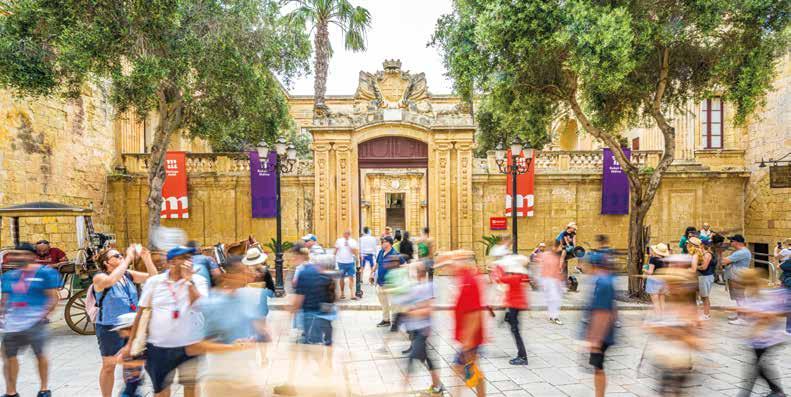 The Main Gate in 2022 and a closeup of the floor tiling in the front courtyard showing numerous fossilised sea urchins from Gozitan rocks
The new reception area inaugurated in 2019
The Main Gate in 2022 and a closeup of the floor tiling in the front courtyard showing numerous fossilised sea urchins from Gozitan rocks
The new reception area inaugurated in 2019
The museum has two entrances. Inside the main doorway at the top landing, the visitor encounters a mummified crocodile from Ancient Egypt inside an exquisite purposely built showcase. Passing through the main glass doors there is another courtyard, with a water fountain. Turning to the right is the display of a vast collection of rocks and minerals, originating from all corners of the world amassed by Dr Louis Mizzi (1847-1935), after whom the hall is named. In the veranda, overlooking the internal courtyard with the water fountain is a small selection of specimens, regularly replaced, highlighting various aspects of the natural world. Across from this hall are the two halls dedicated to Mammals. The first halls showcase the Island’s wild mammalian fauna from the tiny Etruscan Shrew Suncus etruscus, to bones of Sperm and Fin Whales washed ashore on Maltese beaches. On display there is also the only preserved specimen a Maltese Cow. In the adjacent hall, an assortment of carnivorous mammals and primates from different parts of the world dominate this exhibit.

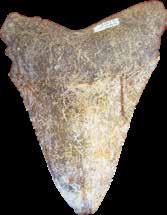
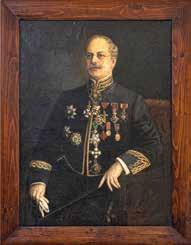


Heading back towards the courtyard at the second entrance, the visitor is immediately faced with an abridged history of the museum and its collections. An information panel highlighting key events in the museum’s historical journey, from G. F. Abela’s 17th-century collections up to 22 June 1972, the official opening of the museum in Mdina. The first hall is dedicated to the late Gozitan naturalist and ornithologist Joe Sultana (1939-2018) who was instrumental in the legal protection of small islands of the Maltese Archipelago. The Ecological Importance of Small Islands is the theme of this hall and one can view scale models of four different islands, namely Filfla, Ħaġret il-Ġeneral (Fungus Rock), Selmunett
(St Paul’s Island) and Comino. The natural and cultural aspects of these Islands are highlighted in a series of information panels. Next to the stairs there is a small display on the Amazon Rainforest with a coiled Anaconda as the centrepiece. Up the first landing is another small display containing a variety of fossilised Ammonites and Trilobites.


 A taxidermy specimen of the Maltese Cow
A taxidermy specimen of the Maltese Cow
The corridors are adorned with a series of information panels highlighting different animal and plant groups present on the Islands. Reaching the first floor are the George Zammit Maempel Halls (1925 - ) on Maltese geology and palaeontology. Dr Zammit Maempel served as Curator of Geology and Palaeontology for over 45 years and the present display was set up by him in the early 1970s. The five main layers are presented in different showcases, with each one linked to a large scaled relief map of Malta. A selection of Maltese fossils, from sea-urchins to shark’s teeth, corals to marine mammals, as well as a unique skull of an extinct member of the crocodile family Tomistoma gaudensis discovered in Gozitan rock formations are also on display.

 The George Zammit Maempel geology display
Ammonite on display in the main stairway
The George Zammit Maempel geology display
Ammonite on display in the main stairway
The next hall is dedicated to this museum’s first Curator, Professor Harry Micallef (19181970), showcasing various aspects of the Marine Life around these Islands. Crabs, lobsters and crayfish, different sharks and rays, as well as a selection of locally occurring fish are on display.
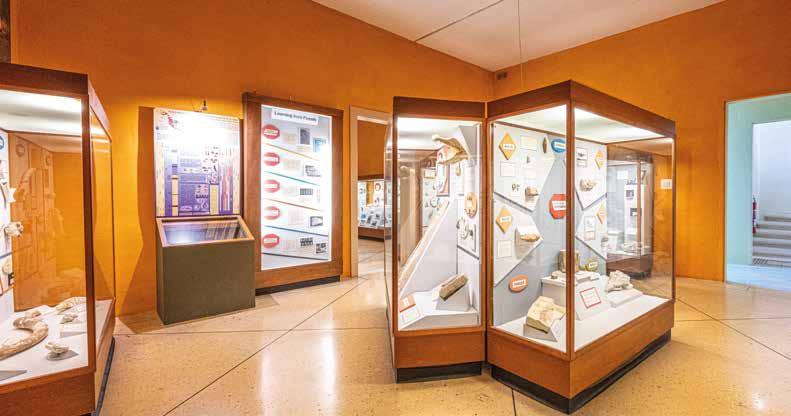
One showcase highlights various fishing implements. Bones and teeth from different cetaceans, mostly found washed ashore are displayed, as is a lone tooth of a Narwhal, the source for the mythical Unicorn.
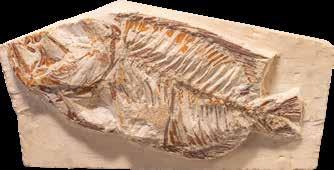

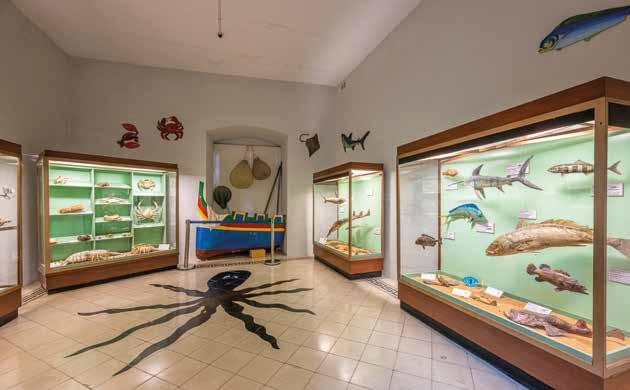
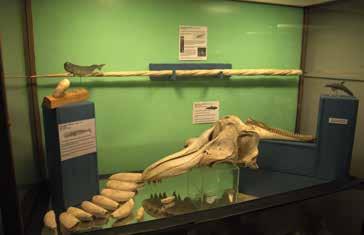
 Above: The Harry Micallef Marine Hall on the 1st floor,
Above: The Harry Micallef Marine Hall on the 1st floor,
Inside the next hall, dedicated to another Curator of natural history, Dr Joseph Baldacchino (1894-1974), is the osteological display, a selection of mounted skeletons belonging to different species from rats and bats, to fish, cow, horse, ostrich and a human being. The specimens exhibited in this hall are also frequently used by biology students for their assignments. Turning back towards the stairway one passes by a small display of several marine turtles specimens. Two showcases highlight the breeding cycle of the Loggerhead turtle Caretta caretta with a small display delineates the various threats and conservation issues.
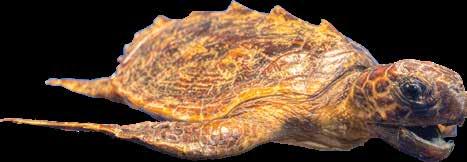

 Above: The Joseph Baldacchino Hall of animal skeletons with a variety of mounted skeletons of mammals, birds, reptiles and fish
Above: The Joseph Baldacchino Hall of animal skeletons with a variety of mounted skeletons of mammals, birds, reptiles and fish
The adjacent room, dedicated to Martin Thake (1954-2018), a former museum educator who also donated the skull collection, highlights the evolution of the human brain with a series of skulls ranging from the first hominids to modern humans.

At the top floor, one enters a small room showcasing local and exotic reptiles. A display highlights the resident reptiles like the Western Whip Snake, Leopard Snake and Algerian Whip Snake, Ocellated Skink, Chameleon, Geckoes and models of the different races of the Maltese Wall Lizard. Another showcases four specimens of the Nile Crocodile Crocodylus niloticus of different ages and sizes. While another display highlights the illegal trade in reptiles through stuffed specimens placed inside small gall-topped boxes, mostly originating from North Africa.
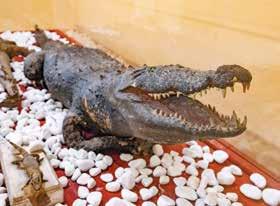

The largest hall inside the museum is dedicated to the sections’ first Curator: Giuseppe Despott (1878-1936), and presents a variety of ecosystems found on the Maltese Islands. The seacliffs at night with the Shearwaters, and the Barn Owls, Yellow-legged Gulls, Peregrine Falcon and Blue Rock Thrushes present during daytime. A series of displays highlight woodland, garrigue and maquis habitats with their respective flora and fauna. The centre piece provides a panoramic view of the Għadira Nature Reserve in Mellieħa with the numerous species of waterbirds that can be found in this reserve. Another showcase highlights a number of EU funded Life projects of the shearwaters breeding locally. Finally, three showcases present some of our breeding birds, the history of Ornithology in Malta, and finally a display on bird hunting and trapping in Malta.


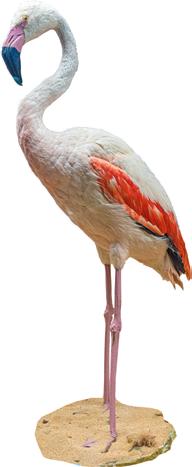
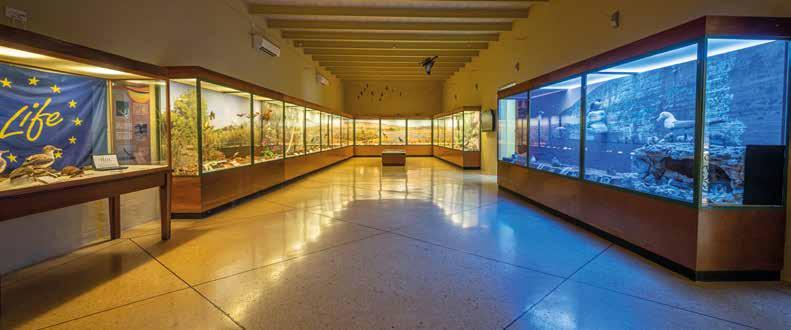
A wide selection of land and marine shells are displayed in the hall dedicated to Alfredo Caruana Gatto (1968-1926). He was a leading naturalist in his free time from a very busy Law profession, as well as a serving cabinet member as Minister of Justice. This hall displays local and foreign species, including a large specimen of a Flying Squid Tadarodes sagittatus, preserved in spirit.



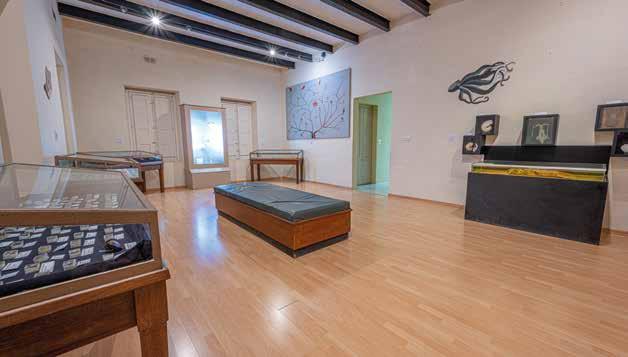
The remaining halls are dedicated to the numerous insect groups, highlighting both local as well as exotic species of butterflies such as the blue coloured Morphos, moths, beetles, grasshoppers and others. The Wet Collection is displayed in the next room with the specimens of bats, mice, primates, fish and many other species, preserved in alcohol.
 The Alfredo Caruana Gatto Hall of Conchology highlights various species of snails, bi-valves and other Mollusca, including a large wet specimen of a Flying Squid Tadarodes sagitatus
The Alfredo Caruana Gatto Hall of Conchology highlights various species of snails, bi-valves and other Mollusca, including a large wet specimen of a Flying Squid Tadarodes sagitatus
Above: The Carmelo De Lucca display of insects highlights various groups from beetles to butterflies and moths, as well as crickets and grasshoppers; Below: South American Morpho Butterflies showing the bright blue colours of the upperparts and the cryptic ‘owl’s eyes’ patterns on the underside
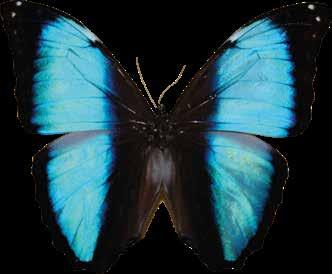
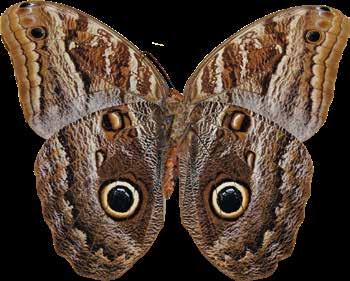
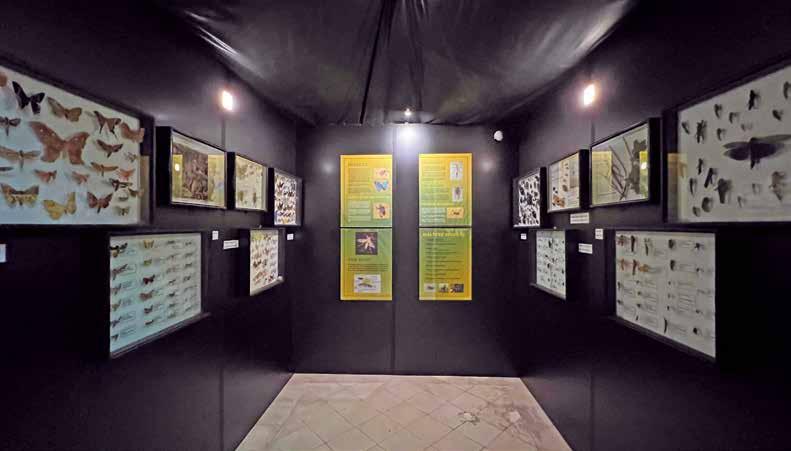
The Wet Collection display featuring various species from mammals to fish and insects, preserved in spirit
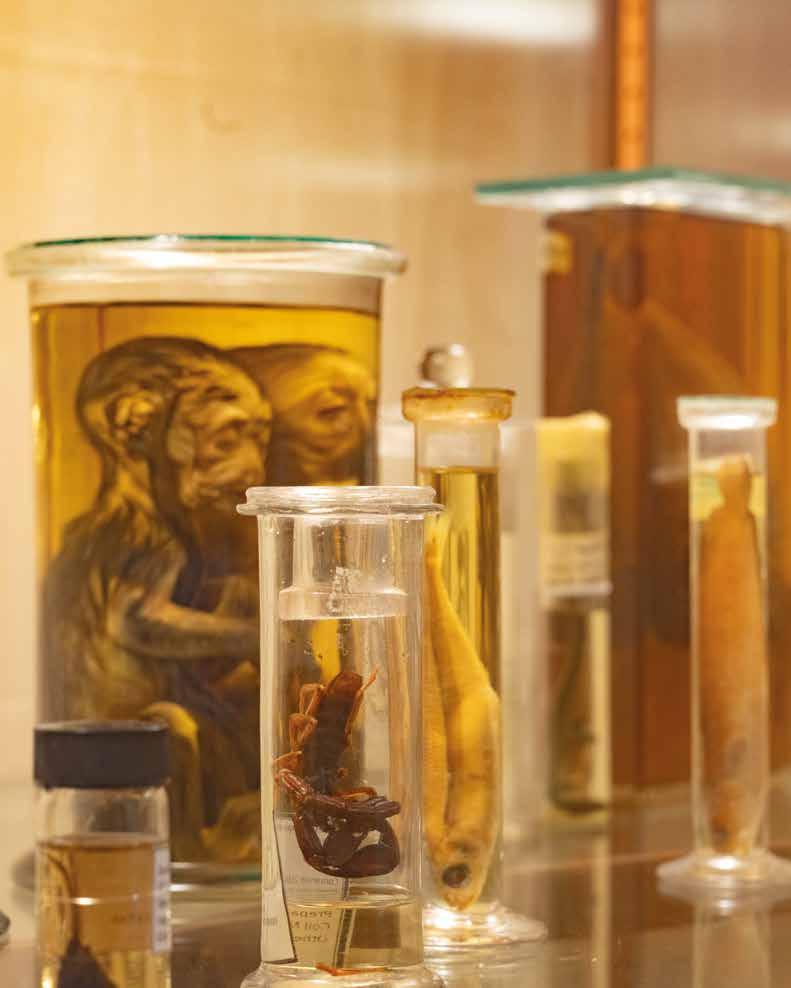
John J. Borg, born in Rabat–Malta (1964) has had a passion for nature and marine organisms at an early age. By age 12, his increased interest in birds drew him to join the Malta Ornithological Society, serving on the Youth Section’s Committee (1977-1980). Graduating in 1981 as a licensed bird ringer, he initiated a long-term study of the Scopoli’s Shearwater breeding biology (1983), which was extended to two other local breeding pelagic species, the Yelkouan Shearwater and Mediterranean Storm Petrel. Borg pursued his academic career reading for a master’s degree in Science at the Institute of Earth Systems (University of Malta), graduating cum laude with a dissertation on ‘Population trends and impacts on Scopoli’s Shearwater in Malta’.
Joining the Museums Department (1992) as custodian and guide, over the years, he rose up to his current post of Senior Curator (Heritage Malta) responsible for the National Museum of Natural History (NMNH), Mdina and Għar Dalam Cave & Museum. His responsibility for the management of the two museums includes didactics, displays, collections and the scientific aspects.
As museum researcher and field ecologist, Borg focuses on seabird populations of Malta and the Central Mediterranean and micro-mammals, especially bats. His research has been published in local and foreign peer-reviewed journals, with over 150 scientific papers. He also authored/co-authored a number of books including The Breeding Birds of Malta (2011) with Joe Sultana, Charles Gauci and Victor Falzon, and The History of Ornithology in Malta (2015) also with Joe Sultana. Currently, he is working on local fauna publications, as well as a major catalogue of the Museum’s Bird Collection.
Borg has undertaken several research projects with local and foreign institutions on various topics including ornithology, entomology, and palaeontology. He participated in numerous environmental assessments, served as ornithological consultant on several projects, including Editor and co-editor of the Mediterranean Seabird Group - MEDMARAVIS News, Il-Merill (BirdLIfe Malta’s scientific journal), and associate editor and member of the scientific committee of Avocetta (CISO – Italy). He is interested in the historical aspect of the natural history, especially 19th- and early 20th-century Maltese naturalists and has a passion for wildlife photography, providing him with overseas expeditions opportunities. His photographs have illustrated numerous publications and displays in local museums and sites. Borg is a licensed bird ringer with Malta Ringing Scheme (1981–present), the Italian Scheme (ISPRA: 2013–present) and the Bulgarian Bird Ringing Scheme (2021–present). He is also an Affiliate Researcher within the Institute of Earth Systems, University of Malta.
proudly manages over 90 museums and landmarks, national monuments and underwater sites

Our identity is one to be proud of - a product of an extraordinary history, which has shaped the spirit of our country, our beliefs, traditions and life today. Our festas; a vibrant expression of celebration, three centuries old. Our temples; older than the pyramids of Egypt. Our food, the bloody battles, the Ġostra. Our unique language, our beautiful ancient cities, and the dramatic stories and inspiring tales of our ancestors.
At Heritage Malta we work tirelessly to uncover, conserve and illuminate our rich cultural identity. We aim to bring ancient and modern history alive - to encourage everyone of us, including those who have chosen Malta as their home, to stand on the ground where our ancestors lived, and feel wonder, excitement and pride. To capture our children’s imagination, allow them to lose themselves in the story. To help them understand where our unique, passionate, vibrant spirit has grown from.
To help them become guardians of our future and encourage them to share our story, across the globe. Because yesterday’s stories of heroes and traditions must be preserved and passed on. Because we are our history. Because this is our cultural identity. Because it is their future, and they should be proud of it.
www.heritagemalta.mt/store

